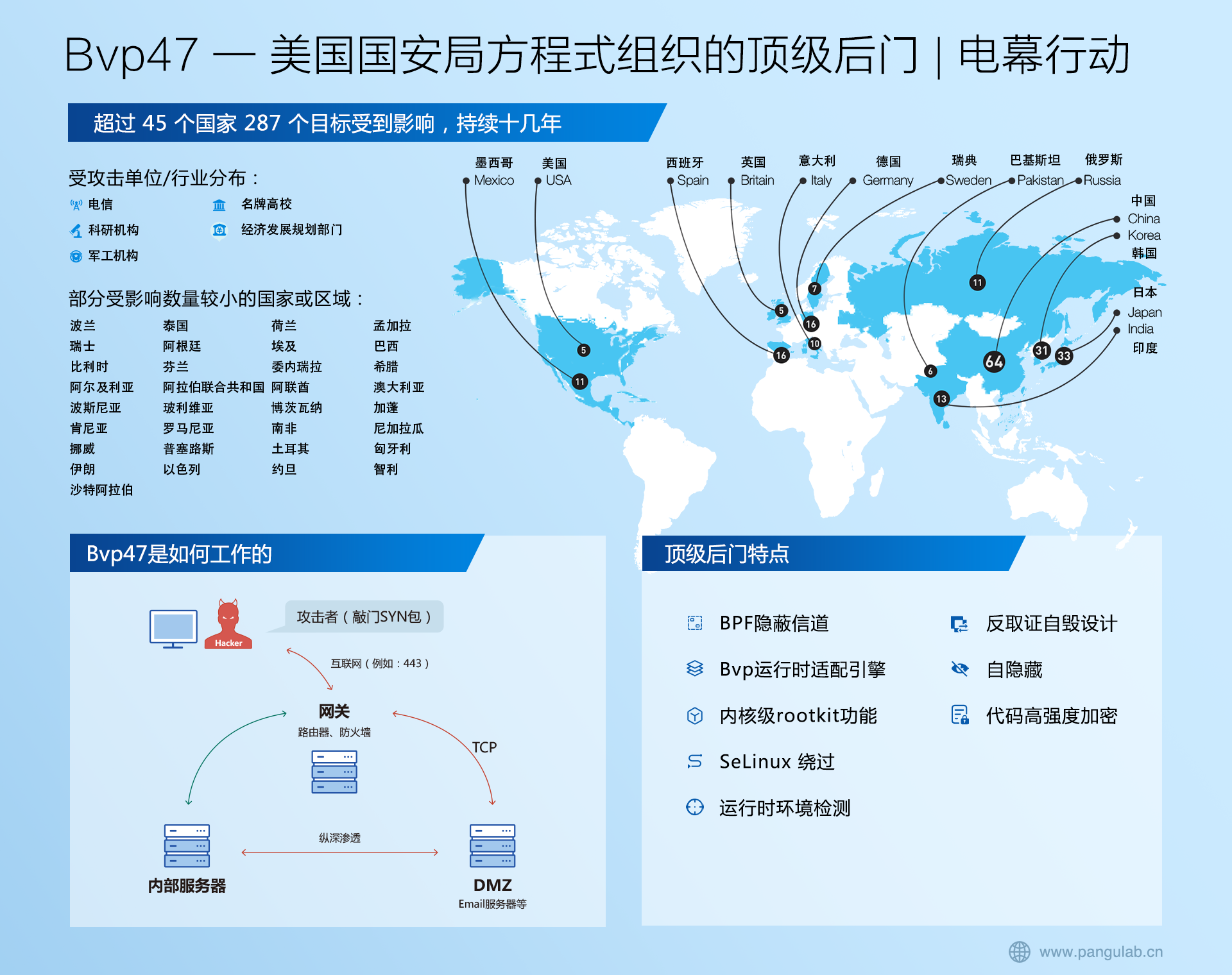Spring Cloud——OpenFeign源码解析
一、简介
Feign是一个http请求调用的轻量级框架,可以以Java接口注解的方式调用Http请求,而不用像Java中通过封装HTTP请求报文的方式直接调用。Feign通过处理注解,将请求模板化,当实际调用的时候,传入参数,根据参数再应用到请求上,进而转化成真正的请求,这种请求相对而言比较直观。
Feign被广泛应用在Spring Cloud 的解决方案中,是学习基于Spring Cloud 微服务架构不可或缺的重要组件。
二、工作原理
-
主程序入口添加了@EnableFeignClients注解开启对FeignClient扫描加载处理。根据Feign Client的开发规范,定义接口并加@FeignClient注解。
-
当程序启动时,会进行包扫描,扫描所有@FeignClients的注解的类,并且将这些信息注入Spring IOC容器中,当定义的的Feign接口中的方法被调用时,通过JDK动态代理方式,来生成具体的RequestTemplate。当生成代理时,Feign会为每个接口方法创建一个RequestTemplate对象,该对象封装可HTTP请求需要的全部信息,如请求参数名,请求方法等信息都是在这个过程中确定的。
-
然后RequestTemplate生成Request,然后把Request交给Client去处理,这里指的Client可以是JDK原生的URLConnection、Apache的HttpClient、也可以是OKhttp,最后Client被封装到LoadBalanceClient类,这个类结合Ribbon负载均衡发起服务之间的调用。

三、源码分析
使用openfegin我们可以不用在yaml文件添加任何关于openfeign的配置,而只需要在一个被@Configuration注释的配置类上或者Application启动类上添加@EnableFeignClients注解。例如:
@EnableFeignClients(basePackages = {"com.yibo.order.center"})
public class OrderCenterApplication {
public static void main(String[] args) {
SpringApplication.run(OrderCenterApplication.class,args);
}
}
basePackages属性用于指定被@FeignClient注解注释的接口所在的包的包名,或者也可以直接指定clients属性,clients属性可以直接指定一个或多个被@FeignClient注释的类。
basePackages是一个数组,如果被@FeignClient注解注释的接口比较分散,可以指定多个包名,而不使用一个大的包名,这样可以减少包扫描耗费的时间,不拖慢应用的启动速度。
EnableFeignClients
- 该注解引入了FeignClientsRegistrar类
@Retention(RetentionPolicy.RUNTIME)
@Target(ElementType.TYPE)
@Documented
@Import(FeignClientsRegistrar.class)
public @interface EnableFeignClients {
//basePackages 属性的别名,允许使用更简洁的注释声明
String[] value() default {};
//扫描包下带注释的组件
String[] basePackages() default {};
//basePackages() 的类型安全的替代方法,用于指定要扫描带注释的组件的软件包,指定类别的包装将被扫描。
Class[] basePackageClasses() default {};
//适用于所有自定义@Configuration,可以包含组成客户端的部分的@Bean
Class[] defaultConfiguration() default {};
//用@FeignClient注释的类的列表,如果不为空,则禁用类路径*扫描。
Class[] clients() default {};
}
FeignClientsRegistrar实现了ImportBeanDefinitionRegistrar,它是一个动态注入bean的接口,Spring Boot启动的时候,会去调用这个类中的registerBeanDefinitions来实现动态Bean的装载。它的作用类似于ImportSelector。
FeignClientsRegistrar
@EnableFeignClients注解使用@Import导入FeignClientsRegistrar类,这是一个ImportBeanDefinitionRegistrar,因此我们重点关注它的registerBeanDefinitions方法。
class FeignClientsRegistrar
implements ImportBeanDefinitionRegistrar, ResourceLoaderAware, EnvironmentAware {
@Override
public void registerBeanDefinitions(AnnotationMetadata metadata,
BeanDefinitionRegistry registry) {
//注册@EnableFeignClients中定义defaultConfiguration属性下的类,包装成FeignClientSpecification,注册到Spring容器。
//在@FeignClient中有一个属性:configuration,这个属性是表示各个FeignClient自定义的配置类,
//后面也会通过调用registerClientConfiguration方法来注册成FeignClientSpecification到容器。
//所以,这里可以完全理解在@EnableFeignClients中配置的是做为兜底的配置,在各个@FeignClient配置的就是自定义的情况。
registerDefaultConfiguration(metadata, registry);
//该方法负责读取@EnableFeignClients的属性,获取需要扫描的包名,
//然后扫描指定的所有包名下的被@FeignClient注解注释的接口,
//将扫描出来的接口调用registerFeignClient方法注册到spring容器。
registerFeignClients(metadata, registry);
}
}
registerDefaultConfiguration
- 解析EnableFeignClients属性,注册FeignClientSpecification类型的Bean
class FeignClientsRegistrar
implements ImportBeanDefinitionRegistrar, ResourceLoaderAware, EnvironmentAware {
private void registerDefaultConfiguration(AnnotationMetadata metadata,
BeanDefinitionRegistry registry) {
//解析EnableFeignClients属性
Map defaultAttrs = metadata
.getAnnotationAttributes(EnableFeignClients.class.getName(), true);
if (defaultAttrs != null && defaultAttrs.containsKey("defaultConfiguration")) {
String name;
if (metadata.hasEnclosingClass()) {
name = "default." + metadata.getEnclosingClassName();
}
else {
name = "default." + metadata.getClassName();
}
//注册客户端配置
registerClientConfiguration(registry, name,
defaultAttrs.get("defaultConfiguration"));
}
}
private void registerClientConfiguration(BeanDefinitionRegistry registry, Object name,
Object configuration) {
//加载FeignClientSpecification bean
BeanDefinitionBuilder builder = BeanDefinitionBuilder
.genericBeanDefinition(FeignClientSpecification.class);
builder.addConstructorArgValue(name);
builder.addConstructorArgValue(configuration);
//注册FeignClientSpecification类型的Bean
registry.registerBeanDefinition(
name + "." + FeignClientSpecification.class.getSimpleName(),
builder.getBeanDefinition());
}
}
registerFeignClients
重点关注registerFeignClients方法,该方法负责读取@EnableFeignClients的属性,获取需要扫描的包名,然后扫描指定的所有包名下的被@FeignClient注解注释的接口,将扫描出来的接口调用registerFeignClient方法注册到spring容器。
class FeignClientsRegistrar
implements ImportBeanDefinitionRegistrar, ResourceLoaderAware, EnvironmentAware {
public void registerFeignClients(AnnotationMetadata metadata,
BeanDefinitionRegistry registry) {
ClassPathScanningCandidateComponentProvider scanner = getScanner();
scanner.setResourceLoader(this.resourceLoader);
Set basePackages;
Map attrs = metadata
.getAnnotationAttributes(EnableFeignClients.class.getName());
// 扫描带有FeignClient注解的类
AnnotationTypeFilter annotationTypeFilter = new AnnotationTypeFilter(
FeignClient.class);
//获取@EnableFeignClients 中clients的值
final Class[] clients = attrs == null ? null
: (Class[]) attrs.get("clients");
if (clients == null || clients.length == 0) {
//如果没有设置,那么设置类型过滤器
scanner.addIncludeFilter(annotationTypeFilter);
// 如果没有设置,则扫描的包路径为 @EnableFeignClients 注解所在的包
basePackages = getBasePackages(metadata);
}
else {
final Set clientClasses = new HashSet<>();
basePackages = new HashSet<>();
//设置了则使用注解属性来进行扫描注册
for (Class clazz : clients) {
basePackages.add(ClassUtils.getPackageName(clazz));
clientClasses.add(clazz.getCanonicalName());
}
AbstractClassTestingTypeFilter filter = new AbstractClassTestingTypeFilter() {
@Override
protected boolean match(ClassMetadata metadata) {
String cleaned = metadata.getClassName().replaceAll("\\$", ".");
return clientClasses.contains(cleaned);
}
};
scanner.addIncludeFilter(
new AllTypeFilter(Arrays.asList(filter, annotationTypeFilter)));
}
//循环扫描注册
for (String basePackage : basePackages) {
Set candidateComponents = scanner
.findCandidateComponents(basePackage);
for (BeanDefinition candidateComponent : candidateComponents) {
if (candidateComponent instanceof AnnotatedBeanDefinition) {
// verify annotated class is an interface
// 验证带注释的类必须是接口
AnnotatedBeanDefinition beanDefinition = (AnnotatedBeanDefinition) candidateComponent;
AnnotationMetadata annotationMetadata = beanDefinition.getMetadata();
Assert.isTrue(annotationMetadata.isInterface(),
"@FeignClient can only be specified on an interface");
Map attributes = annotationMetadata
.getAnnotationAttributes(
FeignClient.class.getCanonicalName());
String name = getClientName(attributes);
//注册被调用客户端配置
//注册(微服务名).FeignClientSpecification类型的bean
//beanname: order-center.FeignClientSpecification
registerClientConfiguration(registry, name,
attributes.get("configuration"));
//注册 FeignClient
registerFeignClient(registry, annotationMetadata, attributes);
}
}
}
}
}
registerFeignClient
- 注册 FeignClient,组装BeanDefinition,实质是一个FeignClientFactoryBean,然后注册到Spring IOC容器。
class FeignClientsRegistrar
implements ImportBeanDefinitionRegistrar, ResourceLoaderAware, EnvironmentAware {
private void registerFeignClient(BeanDefinitionRegistry registry,
AnnotationMetadata annotationMetadata, Map attributes) {
String className = annotationMetadata.getClassName();
//构建FeignClientFactoryBean类型的BeanDefinitionBuilder
BeanDefinitionBuilder definition = BeanDefinitionBuilder
.genericBeanDefinition(FeignClientFactoryBean.class);
validate(attributes);
//将属性设置到 FeignClientFactoryBean 中
definition.addPropertyValue("url", getUrl(attributes));
definition.addPropertyValue("path", getPath(attributes));
String name = getName(attributes);
definition.addPropertyValue("name", name);
String contextId = getContextId(attributes);
definition.addPropertyValue("contextId", contextId);
definition.addPropertyValue("type", className);
definition.addPropertyValue("decode404", attributes.get("decode404"));
definition.addPropertyValue("fallback", attributes.get("fallback"));
definition.addPropertyValue("fallbackFactory", attributes.get("fallbackFactory"));
//设置 Autowire注入的类型,按类型注入
definition.setAutowireMode(AbstractBeanDefinition.AUTOWIRE_BY_TYPE);
String alias = contextId + "FeignClient";
AbstractBeanDefinition beanDefinition = definition.getBeanDefinition();
beanDefinition.setAttribute(FactoryBean.OBJECT_TYPE_ATTRIBUTE, className);
// has a default, won't be null
boolean primary = (Boolean) attributes.get("primary");
beanDefinition.setPrimary(primary);
String qualifier = getQualifier(attributes);
if (StringUtils.hasText(qualifier)) {
alias = qualifier;
}
//将BeanDefinition包装成BeanDefinitionHolder,用于注册
BeanDefinitionHolder holder = new BeanDefinitionHolder(beanDefinition, className,
new String[] { alias });
//注册 BeanDefinition
BeanDefinitionReaderUtils.registerBeanDefinition(holder, registry);
}
}
至此,注册完成,注意此时仅仅只是注册到 DefaultListableBeanFactory容器的 beanDefinitionMap中,并没有实例化!
实例化
- Spring容器启动,调用AbstractApplicationContext#refresh方法,
- 在refresh方法内部调用finishBeanFactoryInitialization方法对单例bean进行初始化,
- finishBeanFactoryInitialization方法调用getBean获取name对应的bean实例,如果不存在,则创建一个,即调用doGetBean方法。
- doGetBean调用createBean方法,createBean方法调用doCreateBean方法。
- doCreateBean()方法主要是根据 beanName、mbd、args,使用对应的策略创建 bean 实例,并返回包装类 BeanWrapper。
- doCreateBean方法中调用populateBean对 bean 进行属性填充;其中,可能存在依赖于其他 bean 的属性,则会递归初始化依赖的 bean 实例。
getObjectForBeanInstance
在doGetBean方法中会调用getObjectForBeanInstance方法获取beanName对应的实例对象(主要用于FactoryBean的特殊处理,普通Bean会直接返回sharedInstance本身)
public abstract class AbstractBeanFactory extends FactoryBeanRegistrySupport implements ConfigurableBeanFactory {
protected Object getObjectForBeanInstance(
Object beanInstance, String name, String beanName, @Nullable RootBeanDefinition mbd) {
// Don't let calling code try to dereference the factory if the bean isn't a factory.
if (BeanFactoryUtils.isFactoryDereference(name)) {
if (beanInstance instanceof NullBean) {
return beanInstance;
}
// 1.如果name以“&”为前缀,但是beanInstance不是FactoryBean,则抛异常
if (!(beanInstance instanceof FactoryBean)) {
throw new BeanIsNotAFactoryException(beanName, beanInstance.getClass());
}
if (mbd != null) {
mbd.isFactoryBean = true;
}
return beanInstance;
}
// Now we have the bean instance, which may be a normal bean or a FactoryBean.
// If it's a FactoryBean, we use it to create a bean instance, unless the
// caller actually wants a reference to the factory.
// 2.1 如果beanInstance不是FactoryBean(也就是普通bean),则直接返回beanInstance
if (!(beanInstance instanceof FactoryBean)) {
return beanInstance;
}
//FactoryBean创建出bean实例返回
// 3.走到这边,代表beanInstance是FactoryBean,但name不带有“&”前缀,表示想要获取的是FactoryBean创建的对象实例
Object object = null;
if (mbd != null) {
mbd.isFactoryBean = true;
}
else {
// 4.如果mbd为空,则尝试从factoryBeanObjectCache缓存中获取该FactoryBean创建的对象实例
object = getCachedObjectForFactoryBean(beanName);
}
if (object == null) {
// Return bean instance from factory.
// 5.只有beanInstance是FactoryBean才能走到这边,因此直接强转
FactoryBean factory = (FactoryBean) beanInstance;
// Caches object obtained from FactoryBean if it is a singleton.
if (mbd == null && containsBeanDefinition(beanName)) {
// 6.mbd为空,但是该bean的BeanDefinition在缓存中存在,则获取该bean的MergedBeanDefinition
mbd = getMergedLocalBeanDefinition(beanName);
}
// 7.mbd是否是合成的(这个字段比较复杂,mbd正常情况都不是合成的,也就是false,有兴趣的可以自己查阅资料看看)
boolean synthetic = (mbd != null && mbd.isSynthetic());
// 8.从FactoryBean获取对象实例
object = getObjectFromFactoryBean(factory, beanName, !synthetic);
}
// 9.返回对象实例
return object;
}
}
getObjectFromFactoryBean
从FactoryBean获取对象实例 getObjectForBeanInstance方法中会调用getObjectFromFactoryBean从FactoryBean获取对象实例,即调用FactoryBean的getObject方法获取对象实例。
public abstract class FactoryBeanRegistrySupport extends DefaultSingletonBeanRegistry {
protected Object getObjectFromFactoryBean(FactoryBean factory, String beanName, boolean shouldPostProcess) {
// 1.如果是单例,并且已经存在于单例对象缓存中
if (factory.isSingleton() && containsSingleton(beanName)) {
//又见双重检查锁机制,尝试再从缓存中获取,防止多线程下可能有别的线程已完成该单例Bean的创建
synchronized (getSingletonMutex()) {
// 2.从FactoryBean创建的单例对象的缓存中获取该bean实例
Object object = this.factoryBeanObjectCache.get(beanName);
if (object == null) {
// 3.调用FactoryBean的getObject方法获取对象实例
object = doGetObjectFromFactoryBean(factory, beanName);
// Only post-process and store if not put there already during getObject() call above
// (e.g. because of circular reference processing triggered by custom getBean calls)
Object alreadyThere = this.factoryBeanObjectCache.get(beanName);
// 4.如果该beanName已经在缓存中存在,则将object替换成缓存中的
if (alreadyThere != null) {
object = alreadyThere;
}
else {
if (shouldPostProcess) {
if (isSingletonCurrentlyInCreation(beanName)) {
// Temporarily return non-post-processed object, not storing it yet..
return object;
}
beforeSingletonCreation(beanName);
try {
// 5.对bean实例进行后置处理,执行所有已注册的BeanPostProcessor的postProcessAfterInitialization方法
//触发BeanPostProcessor,第三方框架可以在此用AOP来包装Bean实例
object = postProcessObjectFromFactoryBean(object, beanName);
}
catch (Throwable ex) {
throw new BeanCreationException(beanName,
"Post-processing of FactoryBean's singleton object failed", ex);
}
finally {
//创建完成后,从缓存锁定的名字里清除
afterSingletonCreation(beanName);
}
}
if (containsSingleton(beanName)) {
// 6.将beanName和object放到factoryBeanObjectCache缓存中
this.factoryBeanObjectCache.put(beanName, object);
}
}
}
// 7.返回object对象实例
return object;
}
}
else {
// 8.调用FactoryBean的getObject方法获取对象实例
Object object = doGetObjectFromFactoryBean(factory, beanName);
if (shouldPostProcess) {
try {
// 9.对bean实例进行后置处理,执行所有已注册的BeanPostProcessor的postProcessAfterInitialization方法
object = postProcessObjectFromFactoryBean(object, beanName);
}
catch (Throwable ex) {
throw new BeanCreationException(beanName, "Post-processing of FactoryBean's object failed", ex);
}
}
// 10.返回object对象实例
return object;
}
}
}
主要步骤:
- 调用 FactoryBean 的 getObject 方法获取对象实例。
- 对 bean 实例进行后续处理,执行所有已注册的 BeanPostProcessor 的 postProcessAfterInitialization 方法。
doGetObjectFromFactoryBean
用FactoryBean的getObject方法获取对象实例
public abstract class FactoryBeanRegistrySupport extends DefaultSingletonBeanRegistry {
private Object doGetObjectFromFactoryBean(final FactoryBean factory, final String beanName)
throws BeanCreationException {
Object object;
try {
// 1.调用FactoryBean的getObject方法获取bean对象实例
if (System.getSecurityManager() != null) {
AccessControlContext acc = getAccessControlContext();
try {
// 1.1 带有权限验证的
object = AccessController.doPrivileged((PrivilegedExceptionAction很简单的方法,就是直接调用 FactoryBean 的 getObject 方法来获取到对象实例。
细心的同学可以发现,该方法是以 do 开头,以 do 开头的方法是最终进行实际操作的方法,例如本方法就是 FactoryBean 最终实际进行创建 bean 对象实例的方法。
factory.getObject()
该方法会调用到FeignClientFactoryBean的getObject方法
class FeignClientFactoryBean
implements FactoryBeangetObject调用的是getTarget方法,它从applicationContext取出FeignContext,FeignContext继承了NamedContextFactory,它是用来统一维护feign中各个feign客户端相互隔离的上下文。
FeignContext注册到容器是在FeignAutoConfiguration上完成的。
@Configuration(proxyBeanMethods = false)
@ConditionalOnClass(Feign.class)
@EnableConfigurationProperties({ FeignClientProperties.class,
FeignHttpClientProperties.class })
@Import(DefaultGzipDecoderConfiguration.class)
public class FeignAutoConfiguration {
@Autowired(required = false)
private List configurations = new ArrayList<>();
@Bean
public FeignContext feignContext() {
FeignContext context = new FeignContext();
context.setConfigurations(this.configurations);
return context;
}
}
在初始化FeignContext时,会把configurations在容器中放入FeignContext中。configurations 的来源就是在前面registerFeignClients方法中将@FeignClient的配置 configuration。
FeignClientFactoryBean#getTarget
-
构建feign.builder,在构建时会向FeignContext获取配置的Encoder,Decoder等各种信息。FeignContext在上文中已经提到会为每个Feign客户端分配了一个容器,它们的父容器就是spring容器。
-
配置完Feign.Builder之后,再判断是否需要LoadBalance,如果需要,则通过LoadBalance的方法来设置。实际上他们最终调用的是Target.target()方法。
class FeignClientFactoryBean
implements FactoryBeanfeign(context)
构建feign.builder,在构建时会向FeignContext获取配置的Encoder,Decoder等各种信息。FeignContext在上文中已经提到会为每个Feign客户端分配了一个容器,它们的父容器就是spring容器。
class FeignClientFactoryBean
implements FactoryBeanFeignClientFactoryBean#loadBalance
- 生成具备负载均衡能力的feign客户端,为feign客户端构建起绑定负载均衡客户端
class FeignClientFactoryBean
implements FactoryBeanFeignClientFactoryBean#getOptional(context, Client.class)
Client client = (Client)this.getOptional(context, Client.class); 从上下文中获取一个 Client,默认是LoadBalancerFeignClient。它是在FeignRibbonClientAutoConfiguration这个自动装配类中,通过Import实现的
@Import({ HttpClientFeignLoadBalancedConfiguration.class,
OkHttpFeignLoadBalancedConfiguration.class,
DefaultFeignLoadBalancedConfiguration.class })
public class FeignRibbonClientAutoConfiguration {
//......
}
DefaultFeignLoadBalancedConfiguration
这里的通过 DefaultFeignLoadBalancedConfiguration 注入客户端 Client 的实现
@Configuration(proxyBeanMethods = false)
class DefaultFeignLoadBalancedConfiguration {
@Bean
@ConditionalOnMissingBean
public Client feignClient(CachingSpringLoadBalancerFactory cachingFactory,
SpringClientFactory clientFactory) {
return new LoadBalancerFeignClient(new Client.Default(null, null), cachingFactory,
clientFactory);
}
}
targeter.target
接下去进入targeter.target(this, builder, context, target) ,携带着构建好的这些对象去创建代理实例 ,这里有两个实现 HystrixTargeter 、DefaultTargeter 很显然,我们没有配置 Hystrix ,这里会走 DefaultTargeter
class DefaultTargeter implements Targeter {
@Override
public T target(FeignClientFactoryBean factory, Feign.Builder feign,
FeignContext context, Target.HardCodedTarget target) {
return feign.target(target);
}
}
feign.target
然后会来到 feign.Feign.Builder#target(feign.Target
public abstract class Feign {
public T target(Target target) {
return build().newInstance(target);
}
public Feign build() {
Client client = Capability.enrich(this.client, capabilities);
Retryer retryer = Capability.enrich(this.retryer, capabilities);
List requestInterceptors = this.requestInterceptors.stream()
.map(ri -> Capability.enrich(ri, capabilities))
.collect(Collectors.toList());
Logger logger = Capability.enrich(this.logger, capabilities);
Contract contract = Capability.enrich(this.contract, capabilities);
Options options = Capability.enrich(this.options, capabilities);
Encoder encoder = Capability.enrich(this.encoder, capabilities);
Decoder decoder = Capability.enrich(this.decoder, capabilities);
InvocationHandlerFactory invocationHandlerFactory =
Capability.enrich(this.invocationHandlerFactory, capabilities);
QueryMapEncoder queryMapEncoder = Capability.enrich(this.queryMapEncoder, capabilities);
SynchronousMethodHandler.Factory synchronousMethodHandlerFactory =
new SynchronousMethodHandler.Factory(client, retryer, requestInterceptors, logger,
logLevel, decode404, closeAfterDecode, propagationPolicy, forceDecoding);
ParseHandlersByName handlersByName =
new ParseHandlersByName(contract, options, encoder, decoder, queryMapEncoder,
errorDecoder, synchronousMethodHandlerFactory);
return new ReflectiveFeign(handlersByName, invocationHandlerFactory, queryMapEncoder);
}
}
ReflectiveFeign.newInstance
最终会调用 ReflectiveFeign.newInstance
这个方法是用来创建一个动态代理的方法,在生成动态代理之前,会根据Contract协议(协议解析规则,解析接口类的注解信息,解析成内部的MethodHandler的处理方式。
从实现的代码中可以看到熟悉的Proxy.newProxyInstance方法产生代理类。而这里需要对每个定义的接口方法进行特定的处理实现,所以这里会出现一个MethodHandler的概念,就是对应方法级别的InvocationHandler。
public class ReflectiveFeign extends Feign {
@Override
public T newInstance(Target target) {
// 解析接口注解信息
//根据接口类和Contract协议解析方式,解析接口类上的方法和注解,转换成内部的MethodHandler处理方式
Map nameToHandler = targetToHandlersByName.apply(target);
Map methodToHandler = new LinkedHashMap();
List defaultMethodHandlers = new LinkedList();
// 根据方法类型
for (Method method : target.type().getMethods()) {
if (method.getDeclaringClass() == Object.class) {
continue;
} else if (Util.isDefault(method)) {
DefaultMethodHandler handler = new DefaultMethodHandler(method);
defaultMethodHandlers.add(handler);
methodToHandler.put(method, handler);
} else {
methodToHandler.put(method, nameToHandler.get(Feign.configKey(target.type(), method)));
}
}
InvocationHandler handler = factory.create(target, methodToHandler);
// 基于Proxy.newProxyInstance 为接口类创建动态实现,将所有的请求转换给InvocationHandler 处理。
T proxy = (T) Proxy.newProxyInstance(target.type().getClassLoader(),
new Class[] {target.type()}, handler);
for (DefaultMethodHandler defaultMethodHandler : defaultMethodHandlers) {
defaultMethodHandler.bindTo(proxy);
}
return proxy;
}
}
targetToHandlersByName.apply
targetToHandlersByName.apply(target) :根据Contract协议规则,解析接口类的注解信息,解析成内部表现:targetToHandlersByName.apply(target);会解析接口方法上的注解,从而解析出方法粒度的特定的配置信息,然后生产一个SynchronousMethodHandler 然后需要维护一个
public class ReflectiveFeign extends Feign {
static final class ParseHandlersByName {
public Map apply(Target target) {
List metadata = contract.parseAndValidateMetadata(target.type());
Map result = new LinkedHashMap();
for (MethodMetadata md : metadata) {
BuildTemplateByResolvingArgs buildTemplate;
if (!md.formParams().isEmpty() && md.template().bodyTemplate() == null) {
buildTemplate =
new BuildFormEncodedTemplateFromArgs(md, encoder, queryMapEncoder, target);
} else if (md.bodyIndex() != null) {
buildTemplate = new BuildEncodedTemplateFromArgs(md, encoder, queryMapEncoder, target);
} else {
buildTemplate = new BuildTemplateByResolvingArgs(md, queryMapEncoder, target);
}
if (md.isIgnored()) {
result.put(md.configKey(), args -> {
throw new IllegalStateException(md.configKey() + " is not a method handled by feign");
});
} else {
result.put(md.configKey(),
factory.create(target, md, buildTemplate, options, decoder, errorDecoder));
}
}
return result;
}
}
}
SpringMvcContract:当前Spring Cloud 微服务解决方案中,为了降低学习成本,采用了Spring MVC的部分注解来完成 请求协议解析,也就是说 ,写客户端请求接口和像写服务端代码一样:客户端和服务端可以通过SDK的方式进行约定,客户端只需要引入服务端发布的SDK API,就可以使用面向接口的编码方式对接服务。
OpenFeign调用过程 :
在前面的分析中,我们知道OpenFeign最终返回的是一个 ReflectiveFeign.FeignInvocationHandler 的对象。那么当客户端发起请求时,会进入到 FeignInvocationHandler.invoke 方法中,这个大家都知道,它是一个动态代理的实现。
public class ReflectiveFeign extends Feign {
@Override
public Object invoke(Object proxy, Method method, Object[] args) throws Throwable {
if ("equals".equals(method.getName())) {
try {
Object otherHandler =
args.length > 0 && args[0] != null ? Proxy.getInvocationHandler(args[0]) : null;
return equals(otherHandler);
} catch (IllegalArgumentException e) {
return false;
}
} else if ("hashCode".equals(method.getName())) {
return hashCode();
} else if ("toString".equals(method.getName())) {
return toString();
}
// 利用分发器筛选方法,找到对应的handler 进行处理
return dispatch.get(method).invoke(args);
}
}
SynchronousMethodHandler#invoke
而接着,在invoke方法中,会调用 this.dispatch.get(method)).invoke(args) 。this.dispatch.get(method) 会返回一个SynchronousMethodHandler,进行拦截处理。这个方法会根据参数生成完成的RequestTemplate对象,这个对象是Http请求的模版,代码如下。
final class SynchronousMethodHandler implements MethodHandler {
@Override
public Object invoke(Object[] argv) throws Throwable {
RequestTemplate template = buildTemplateFromArgs.create(argv);
Options options = findOptions(argv);
Retryer retryer = this.retryer.clone();
while (true) {
try {
return executeAndDecode(template, options);
} catch (RetryableException e) {
try {
retryer.continueOrPropagate(e);
} catch (RetryableException th) {
Throwable cause = th.getCause();
if (propagationPolicy == UNWRAP && cause != null) {
throw cause;
} else {
throw th;
}
}
if (logLevel != Logger.Level.NONE) {
logger.logRetry(metadata.configKey(), logLevel);
}
continue;
}
}
}
}
SynchronousMethodHandler#executeAndDecode
经过上述的代码,我们已经将restTemplate拼装完成,上面的代码中有一个 executeAndDecode() 方法,该方法通过RequestTemplate生成Request请求对象,然后利用Http Client获取response,来获取响应信息。
final class SynchronousMethodHandler implements MethodHandler {
Object executeAndDecode(RequestTemplate template, Options options) throws Throwable {
//转化为Http请求报文
Request request = targetRequest(template);
if (logLevel != Logger.Level.NONE) {
logger.logRequest(metadata.configKey(), logLevel, request);
}
Response response;
long start = System.nanoTime();
try {
//发起远程通信
response = client.execute(request, options);
//获取返回结果
response = response.toBuilder()
.request(request)
.requestTemplate(template)
.build();
} catch (IOException e) {
if (logLevel != Logger.Level.NONE) {
logger.logIOException(metadata.configKey(), logLevel, e, elapsedTime(start));
}
throw errorExecuting(request, e);
}
long elapsedTime = TimeUnit.NANOSECONDS.toMillis(System.nanoTime() - start);
if (decoder != null)
return decoder.decode(response, metadata.returnType());
CompletableFuture经过上面的分析,这里的 client.execute 的 client 的类型是LoadBalancerFeignClient

LoadBalancerFeignClient#execute
这里就很自然的进入 LoadBalancerFeignClient#execute
public class LoadBalancerFeignClient implements Client {
@Override
public Response execute(Request request, Request.Options options) throws IOException {
try {
URI asUri = URI.create(request.url());
String clientName = asUri.getHost();
URI uriWithoutHost = cleanUrl(request.url(), clientName);
FeignLoadBalancer.RibbonRequest ribbonRequest = new FeignLoadBalancer.RibbonRequest(
this.delegate, request, uriWithoutHost);
IClientConfig requestConfig = getClientConfig(options, clientName);
return lbClient(clientName)
.executeWithLoadBalancer(ribbonRequest, requestConfig).toResponse();
}
catch (ClientException e) {
IOException io = findIOException(e);
if (io != null) {
throw io;
}
throw new RuntimeException(e);
}
}
}
其实这个execute里面得流程就是 Ribbon 的那一套。我们可以简单的看一下。首先是构造URI,构造RibbonRequest,选择 LoadBalance,发起调用。
来看一下lbClient 选择负载均衡器的时候做了什么
public class LoadBalancerFeignClient implements Client {
private FeignLoadBalancer lbClient(String clientName) {
return this.lbClientFactory.create(clientName);
}
public FeignLoadBalancer create(String clientName) {
FeignLoadBalancer client = this.cache.get(clientName);
if (client != null) {
return client;
}
IClientConfig config = this.factory.getClientConfig(clientName);
ILoadBalancer lb = this.factory.getLoadBalancer(clientName);
ServerIntrospector serverIntrospector = this.factory.getInstance(clientName,
ServerIntrospector.class);
client = this.loadBalancedRetryFactory != null
? new RetryableFeignLoadBalancer(lb, config, serverIntrospector,
this.loadBalancedRetryFactory)
: new FeignLoadBalancer(lb, config, serverIntrospector);
this.cache.put(clientName, client);
return client;
}
}
可以得出的结论就是 this.factory.getLoadBalancer(clientName) 跟Ribbon 源码里的获取方式一样,无疑这里获取的就是默认的 ZoneAwareLoadBalancer。然后包装成一个 FeignLoadBalancer 进行返回。
既然负载均衡器选择完了,那么一定还有个地方通过该负载去选择一个服务,接着往下看:
public abstract class AbstractLoadBalancerAwareClient extends LoadBalancerContext implements IClient, IClientConfigAware {
public T executeWithLoadBalancer(final S request, final IClientConfig requestConfig) throws ClientException {
LoadBalancerCommand command = buildLoadBalancerCommand(request, requestConfig);
try {
return command.submit(
new ServerOperation() {
@Override
public Observable call(Server server) {
URI finalUri = reconstructURIWithServer(server, request.getUri());
S requestForServer = (S) request.replaceUri(finalUri);
try {
return Observable.just(AbstractLoadBalancerAwareClient.this.execute(requestForServer, requestConfig));
}
catch (Exception e) {
return Observable.error(e);
}
}
})
.toBlocking()
.single();
} catch (Exception e) {
Throwable t = e.getCause();
if (t instanceof ClientException) {
throw (ClientException) t;
} else {
throw new ClientException(e);
}
}
}
}
上面这段代码就是通过获取到的负载进行执行请求,但是这个时候 服务还没有选择,我们跟进去 submit 请求看一看究竟:
public class LoadBalancerCommand {
public Observable submit(final ServerOperation operation) {
final ExecutionInfoContext context = new ExecutionInfoContext();
if (listenerInvoker != null) {
try {
listenerInvoker.onExecutionStart();
} catch (AbortExecutionException e) {
return Observable.error(e);
}
}
final int maxRetrysSame = retryHandler.getMaxRetriesOnSameServer();
final int maxRetrysNext = retryHandler.getMaxRetriesOnNextServer();
// Use the load balancer
Observable o =
(server == null ? selectServer() : Observable.just(server))
.concatMap(new Func1>() {
//省略......
});
//省略......
}
}
可以看到这里有个 selectServer的方法 ,跟进去:
public class LoadBalancerCommand {
private final LoadBalancerContext loadBalancerContext;
private Observable selectServer() {
return Observable.create(new OnSubscribe() {
@Override
public void call(Subscriber next) {
try {
Server server = loadBalancerContext.getServerFromLoadBalancer(loadBalancerURI, loadBalancerKey);
next.onNext(server);
next.onCompleted();
} catch (Exception e) {
next.onError(e);
}
}
});
}
}
public class LoadBalancerContext implements IClientConfigAware {
public Server getServerFromLoadBalancer(@Nullable URI original, @Nullable Object loadBalancerKey) throws ClientException {
String host = null;
int port = -1;
if (original != null) {
host = original.getHost();
}
if (original != null) {
Pair schemeAndPort = deriveSchemeAndPortFromPartialUri(original);
port = schemeAndPort.second();
}
// Various Supported Cases
// The loadbalancer to use and the instances it has is based on how it was registered
// In each of these cases, the client might come in using Full Url or Partial URL
ILoadBalancer lb = getLoadBalancer();
if (host == null) {
// Partial URI or no URI Case
// well we have to just get the right instances from lb - or we fall back
if (lb != null){
Server svc = lb.chooseServer(loadBalancerKey);
if (svc == null){
throw new ClientException(ClientException.ErrorType.GENERAL,
"Load balancer does not have available server for client: "
+ clientName);
}
host = svc.getHost();
if (host == null){
throw new ClientException(ClientException.ErrorType.GENERAL,
"Invalid Server for :" + svc);
}
logger.debug("{} using LB returned Server: {} for request {}", new Object[]{clientName, svc, original});
return svc;
} else {
// No Full URL - and we dont have a LoadBalancer registered to
// obtain a server
// if we have a vipAddress that came with the registration, we
// can use that else we
// bail out
if (vipAddresses != null && vipAddresses.contains(",")) {
throw new ClientException(
ClientException.ErrorType.GENERAL,
"Method is invoked for client " + clientName + " with partial URI of ("
+ original
+ ") with no load balancer configured."
+ " Also, there are multiple vipAddresses and hence no vip address can be chosen"
+ " to complete this partial uri");
} else if (vipAddresses != null) {
try {
Pair hostAndPort = deriveHostAndPortFromVipAddress(vipAddresses);
host = hostAndPort.first();
port = hostAndPort.second();
} catch (URISyntaxException e) {
throw new ClientException(
ClientException.ErrorType.GENERAL,
"Method is invoked for client " + clientName + " with partial URI of ("
+ original
+ ") with no load balancer configured. "
+ " Also, the configured/registered vipAddress is unparseable (to determine host and port)");
}
} else {
throw new ClientException(
ClientException.ErrorType.GENERAL,
this.clientName
+ " has no LoadBalancer registered and passed in a partial URL request (with no host:port)."
+ " Also has no vipAddress registered");
}
}
} else {
// Full URL Case
// This could either be a vipAddress or a hostAndPort or a real DNS
// if vipAddress or hostAndPort, we just have to consult the loadbalancer
// but if it does not return a server, we should just proceed anyways
// and assume its a DNS
// For restClients registered using a vipAddress AND executing a request
// by passing in the full URL (including host and port), we should only
// consult lb IFF the URL passed is registered as vipAddress in Discovery
boolean shouldInterpretAsVip = false;
if (lb != null) {
shouldInterpretAsVip = isVipRecognized(original.getAuthority());
}
if (shouldInterpretAsVip) {
Server svc = lb.chooseServer(loadBalancerKey);
if (svc != null){
host = svc.getHost();
if (host == null){
throw new ClientException(ClientException.ErrorType.GENERAL,
"Invalid Server for :" + svc);
}
logger.debug("using LB returned Server: {} for request: {}", svc, original);
return svc;
} else {
// just fall back as real DNS
logger.debug("{}:{} assumed to be a valid VIP address or exists in the DNS", host, port);
}
} else {
// consult LB to obtain vipAddress backed instance given full URL
//Full URL execute request - where url!=vipAddress
logger.debug("Using full URL passed in by caller (not using load balancer): {}", original);
}
}
// end of creating final URL
if (host == null){
throw new ClientException(ClientException.ErrorType.GENERAL,"Request contains no HOST to talk to");
}
// just verify that at this point we have a full URL
return new Server(host, port);
}
}
可以看到的是这里获取到了之前构造好的 ZoneAwareLoadBalancer 然后调用 chooseServer 方法获取server ,这个是跟Ribbon 中是一样的流程。
获取到了server 后,会回调先前 executeWithLoadBalancer 方法里构造的 ServerOperation 的 call 方法:
return command.submit(
new ServerOperation() {
@Override
public Observable call(Server server) {
URI finalUri = reconstructURIWithServer(server, request.getUri());
S requestForServer = (S) request.replaceUri(finalUri);
try {
return Observable.just(AbstractLoadBalancerAwareClient.this.execute(requestForServer, requestConfig));
}
catch (Exception e) {
return Observable.error(e);
}
}
})
.toBlocking()
.single();
然后会执行 AbstractLoadBalancerAwareClient.this.execute(requestForServer, requestConfig) 进行最后的调用,实际上这里走的是 FeignLoadBalancer#execute
public class FeignLoadBalancer extends
AbstractLoadBalancerAwareClient {
@Override
public RibbonResponse execute(RibbonRequest request, IClientConfig configOverride)
throws IOException {
Request.Options options;
if (configOverride != null) {
RibbonProperties override = RibbonProperties.from(configOverride);
options = new Request.Options(override.connectTimeout(this.connectTimeout),
override.readTimeout(this.readTimeout));
}
else {
options = new Request.Options(this.connectTimeout, this.readTimeout);
}
Response response = request.client().execute(request.toRequest(), options);
return new RibbonResponse(request.getUri(), response);
}
}
而这里调用的request.client().execute(request.toRequest(), options) 则是 DefaultFeignLoadBalancedConfiguration 注入的 LoadBalancerFeignClient ,在构造 LoadBalancerFeignClient 的时候 ,传递了个 feign.Client.Default ,然后利用 feign.Client.Default 构造了一个 RibbonRequest。
所以这里走 feign.Client.Default#execute :
public interface Client {
class Default implements Client {
@Override
public Response execute(Request request, Options options) throws IOException {
HttpURLConnection connection = convertAndSend(request, options);
return convertResponse(connection, request);
}
}
}
利用 JDK 提供的 HttpURLConnection 发起远程的 HTTP通讯。至此发起请求的流程就完成了。下面附上一张这个过程的流程图:

对于Ribbon的调用过程请参考:https://www.jianshu.com/p/f3db11f045cc
OpenFeign Configuration :
针对 feign 的 Configuration,官方给我们提供了很多的个性化配置,具体可以参考 org.springframework.cloud.openfeign.FeignClientProperties.FeignClientConfiguration
public static class FeignClientConfiguration {
// 日志
private Logger.Level loggerLevel;
// 连接超时
private Integer connectTimeout;
private Integer readTimeout;
//重试
private Class retryer;
//解码
private Class errorDecoder;
private List> requestInterceptors;
// 编码
private Boolean decode404;
private Class decoder;
private Class encoder;
// 解析
private Class contract;
private ExceptionPropagationPolicy exceptionPropagationPolicy;
}
这里举个简单的例子,以Logger 为例。我们想为每个不同的 FeignClient 设置日志级别。
1、添加配置类:
@Configuration
public class FooConfiguration {
@Bean
Logger.Level feignLoggerLevel() {
return Logger.Level.FULL;
}
}
2、配置日志级别 ,logging.level + FeignClient 包的全路径。
logging.level.com.wuzz.FeignClientService: DEBUG
就这样就配置完成了。重启服务就可以看到效果。
参考: https://www.cnblogs.com/lucky-yqy/p/14589434.html
https://www.cnblogs.com/wuzhenzhao/p/13680807.html







